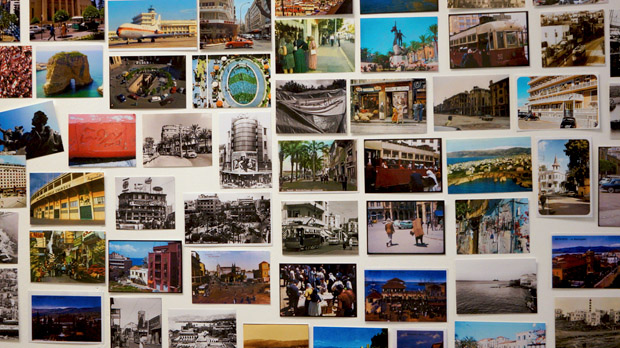
Beirut is probably the most resilient of all cities. If Beirut was a person, it would probably be a motivational speaker. That being said, perhaps there has never been a city that has known as much destruction and devastation as Beirut and there hasn’t been a city that has rebuilt and reinvented itself as much as well.
Beirut II explores the many complex facets of Beirut. What first started as an exploration of artistic potential of the city by curator Bariaa Mourad ended up being a breathtaking portrait of the city hailed as “the Paris of the Middle East.” History of destruction aside, the dynamic of the social and political dynamic is also explored through the various works.
Beirut II is haunting. That’s perhaps the best way to describe the exhibit. The video art, sound, and photography shouldn’t go together theoretically. The works are all different aesthetically and conceptually but that just adds to the experience. As a result of that, the exhibit is almost a mosaic portrait of the city. Each work reflects the artist’s memory or impression of the city, some even try to project their memory upon the viewer and I have to say it’s quite successful.


The photographs are intimate, specifically Randa Mirza’s “La Grotte aux Pigeons.” The photographs depict young men and boys jumping off Beirut’s coastal cliffs. The rock is located at an island annexed by the city where fishers live. The community that is mostly men, take part in the hobby as a show of masculinity. Socio-economic connotations aside, the black and white pictures are attention grabbing aesthetically.
Another attention grabbing work is a video installation created by the curator himself. The video shows textual memories by Najla Said, daughter of the late Edward Said. Much like reading the diary of Anne Frank, Najla’s work transports to her experience as a child and how she reflects upon it now. Snippets of the summers she spent in Lebanon are contrasted by the backdrop of an unstable Beirut.

Rania Stephan’s is less formal but not less riveting in any way. Shot in July 2006, it shows how Lebanese people dealt with everyday life. The 8 minute video shows short vignettes of different people. The most compelling is probably the interview with three small school children. Two boys and one girl try to rationalize what would happen to them should an Israeli missile destroy their homes. One of the children turns a prayer into a chant at one point. The innocence paired with destruction is fleeting but not any less heartbreaking.
The most unique work is Ali Cherri’s piece. A video projection of a body is reflected onto a pool of water. The text “Yesterday was dramatic” can be read at first. A few moments later “Today is okay” is projected.” However, the viewers will find themselves unable to read the second phrase until they look down on the water and see it reflected. The work reflects on what it like to live in a city that might not be at war anymore but is still in a state of struggle at the same time.
It is impossible to step foot in the Contemporary Art Platform and not be enchanted by the exhibition. All of the works will entrance you in their own way; perhaps even overwhelm you at one point, but in the best way possible. Stop by if you can, the exhibition is open till July 18 and it really is a wonderful experience.
For more information about the exhibit and CAP, visit www.capkuwait.com
– Haya Al-Farhan
Photography: Bader Al-Yaseen











